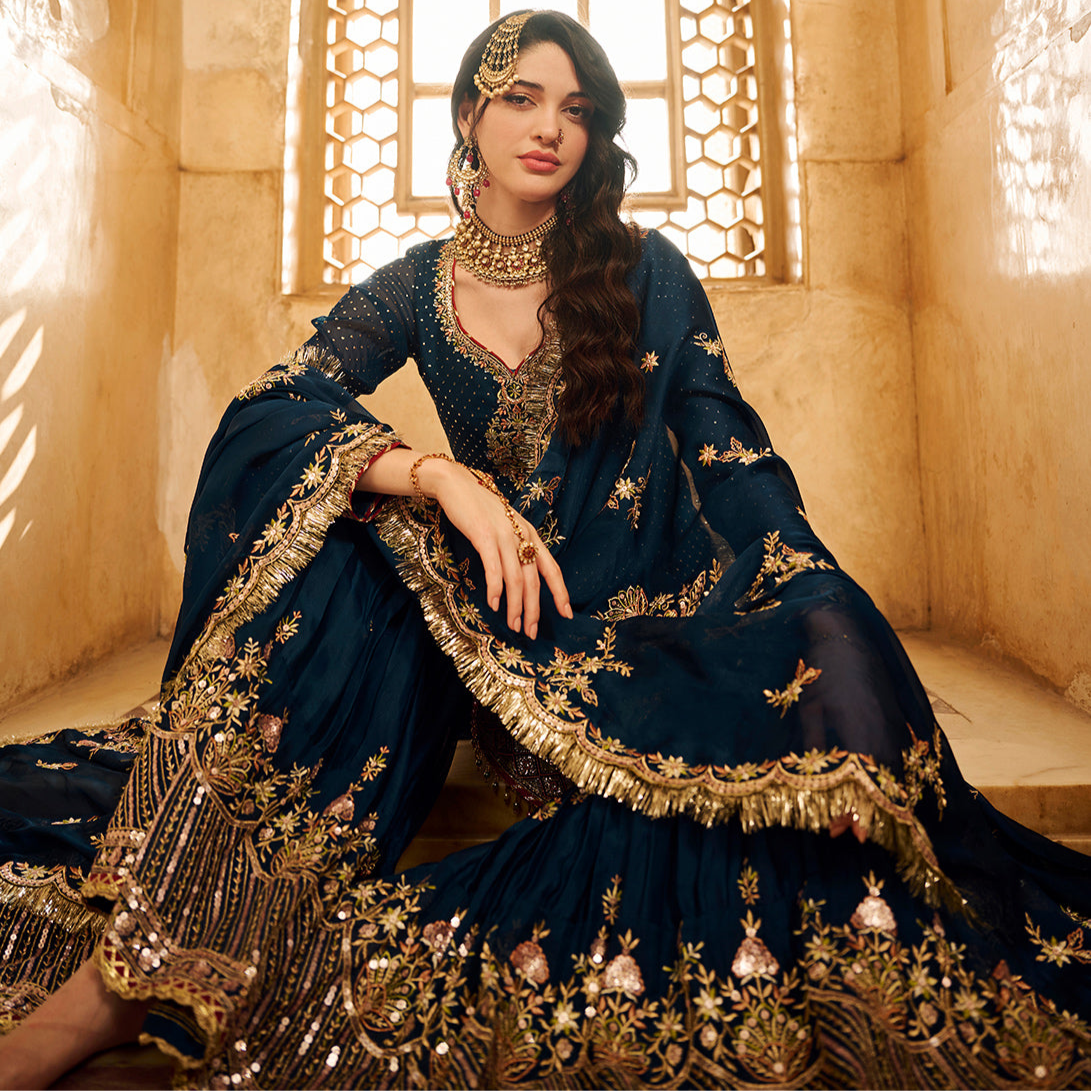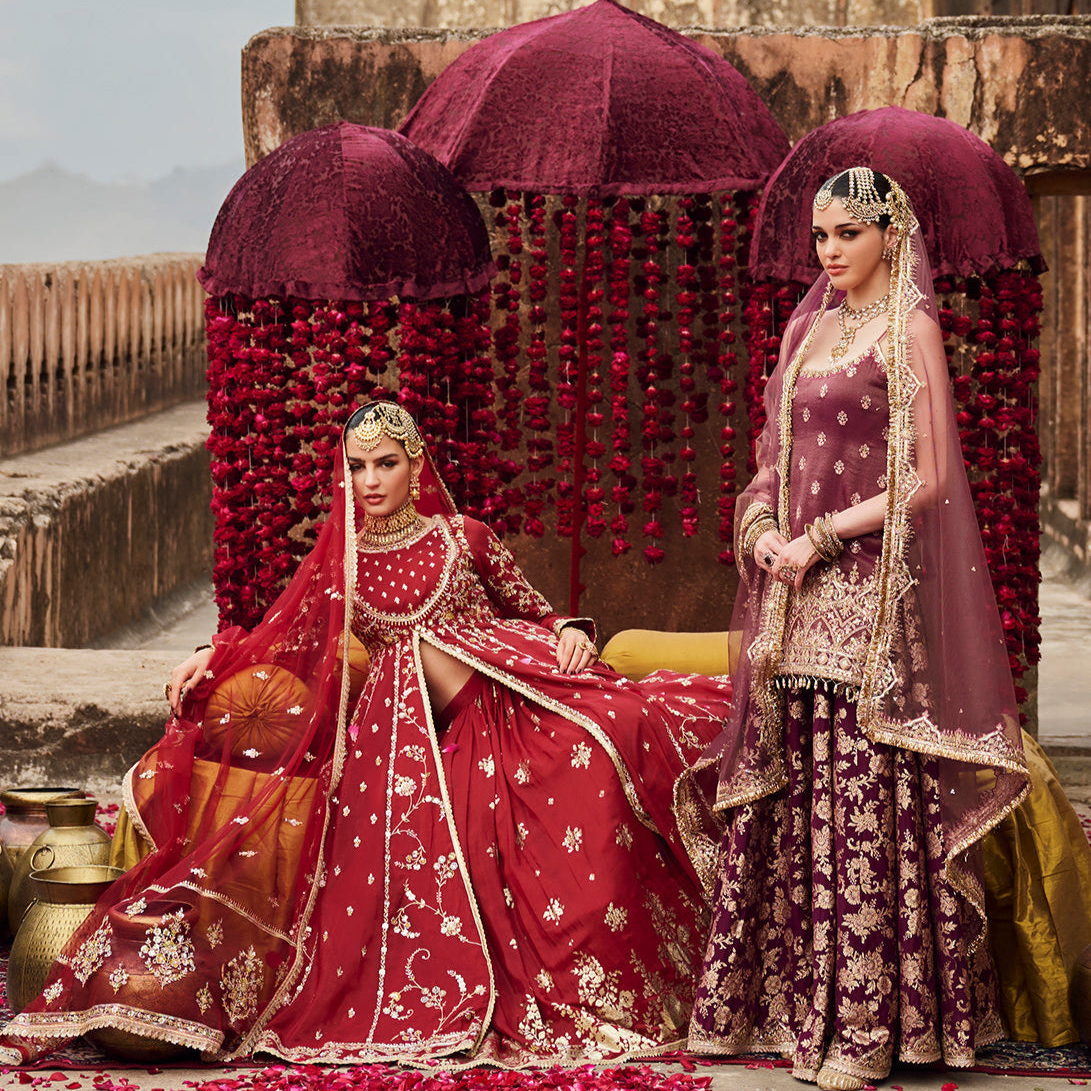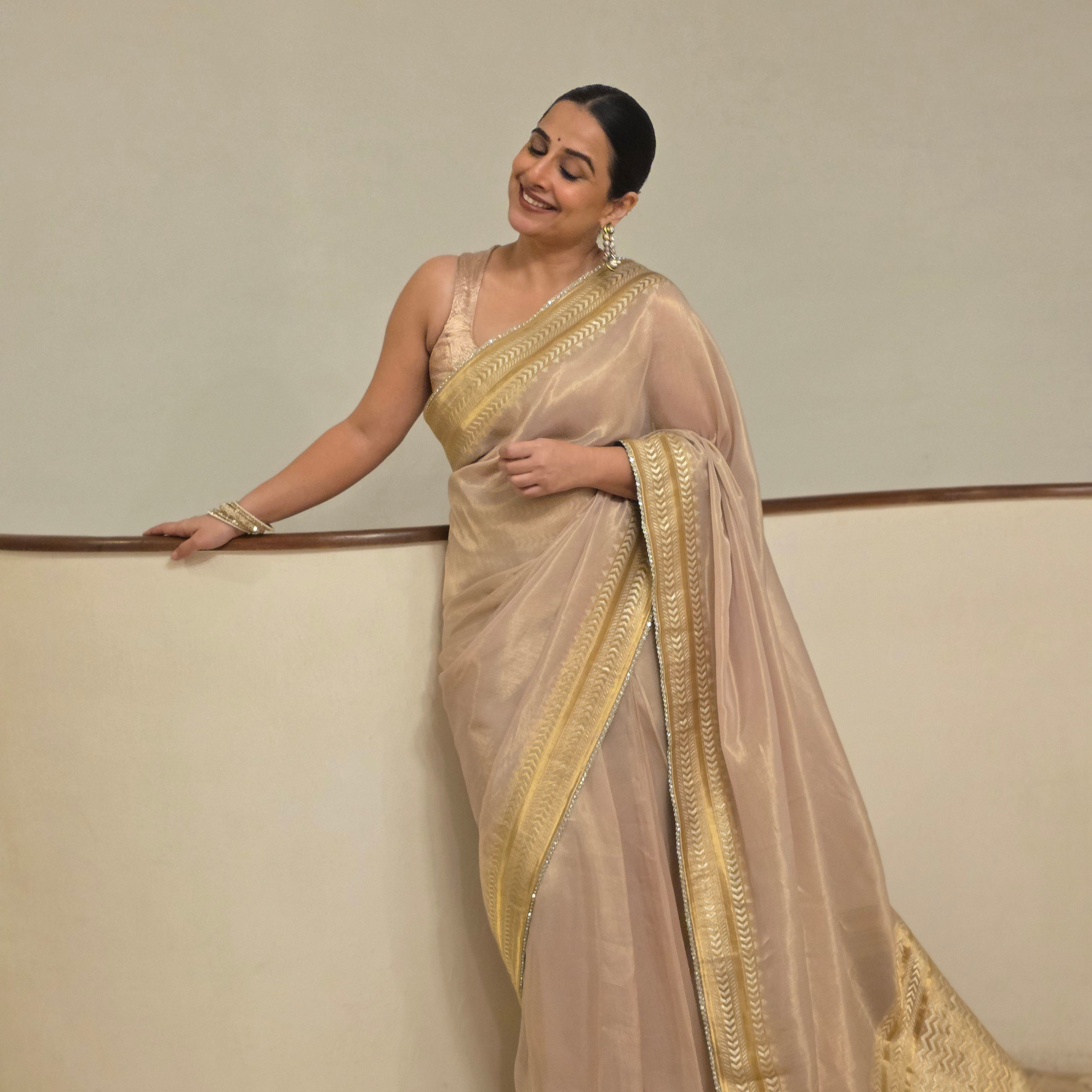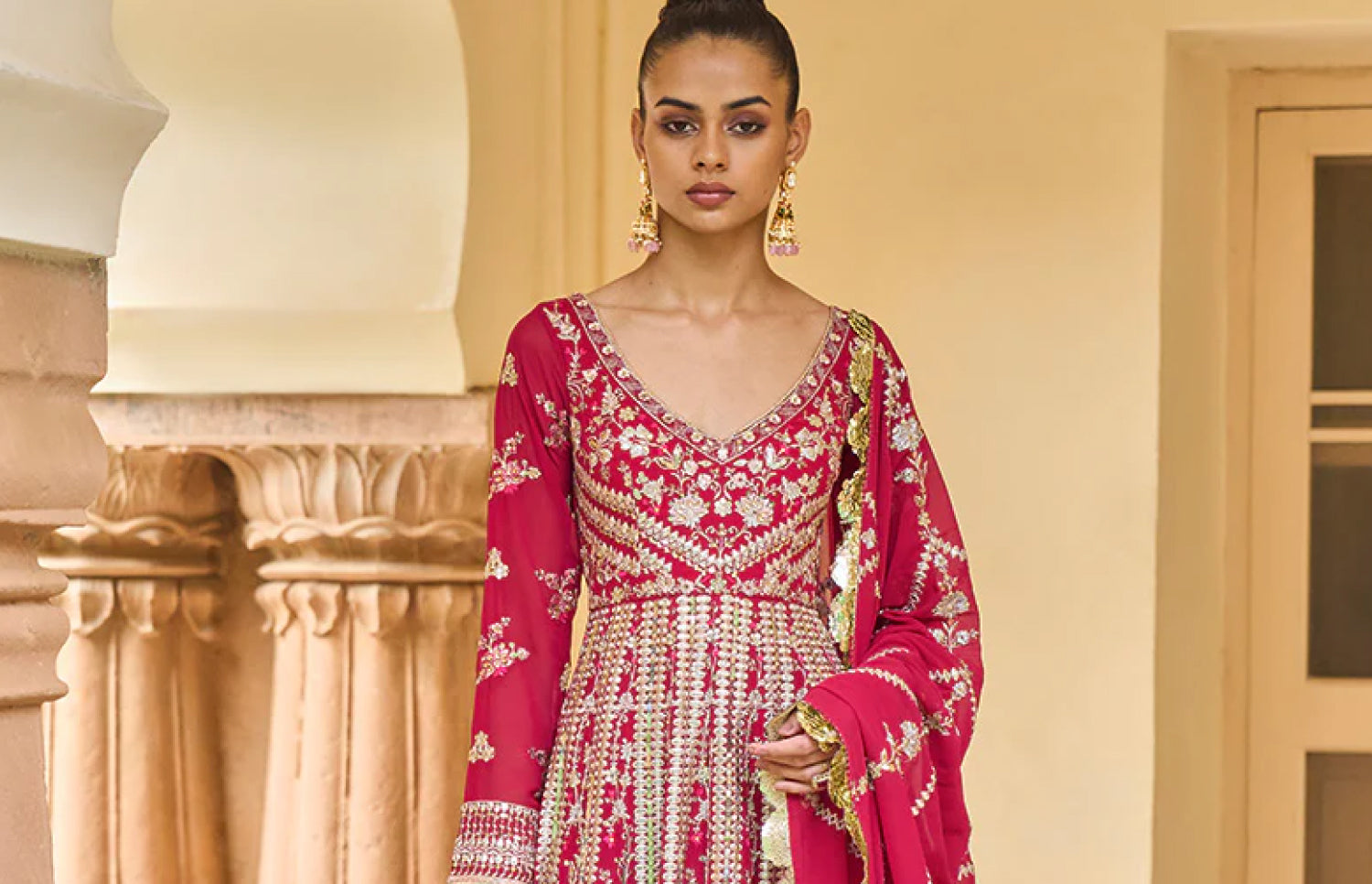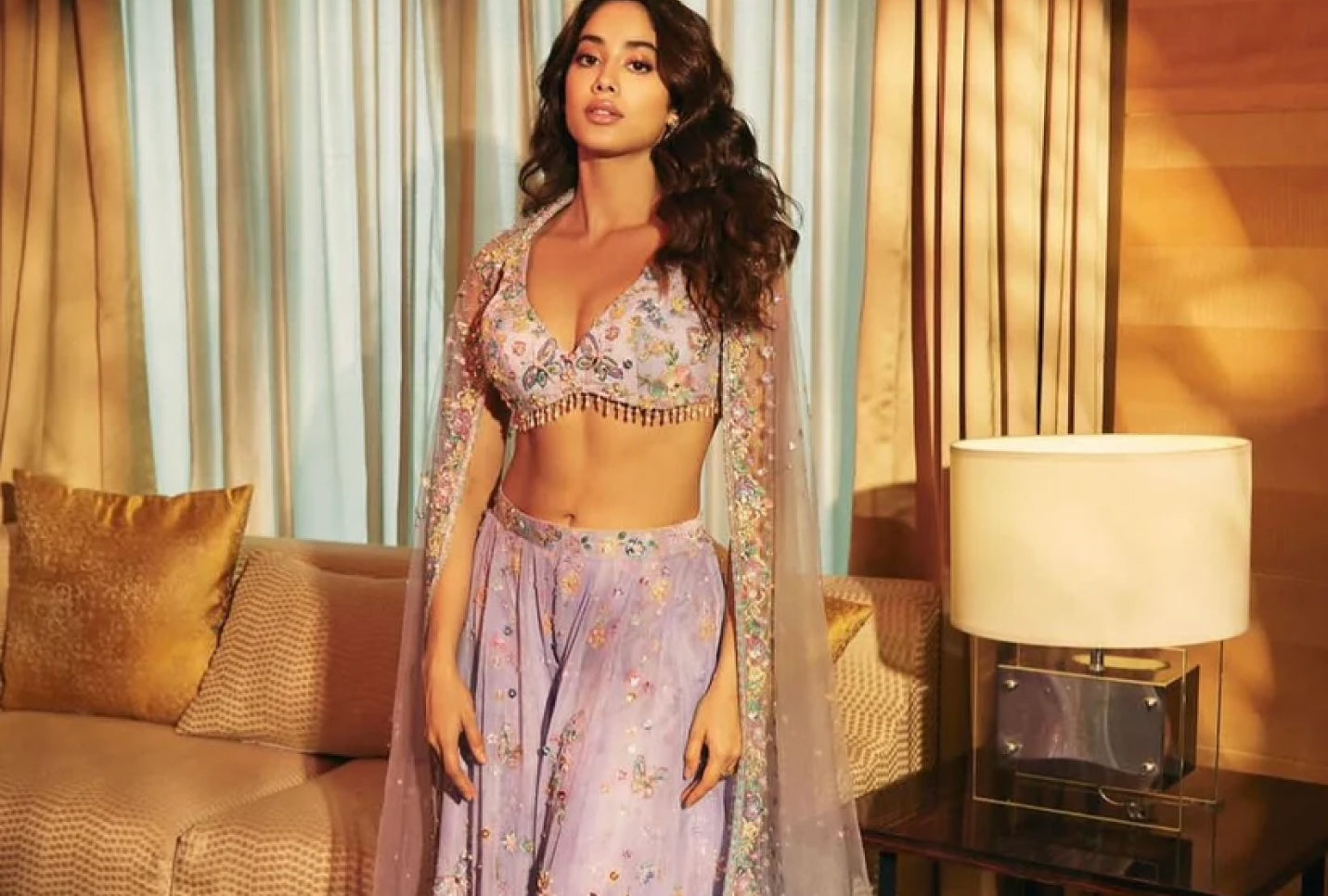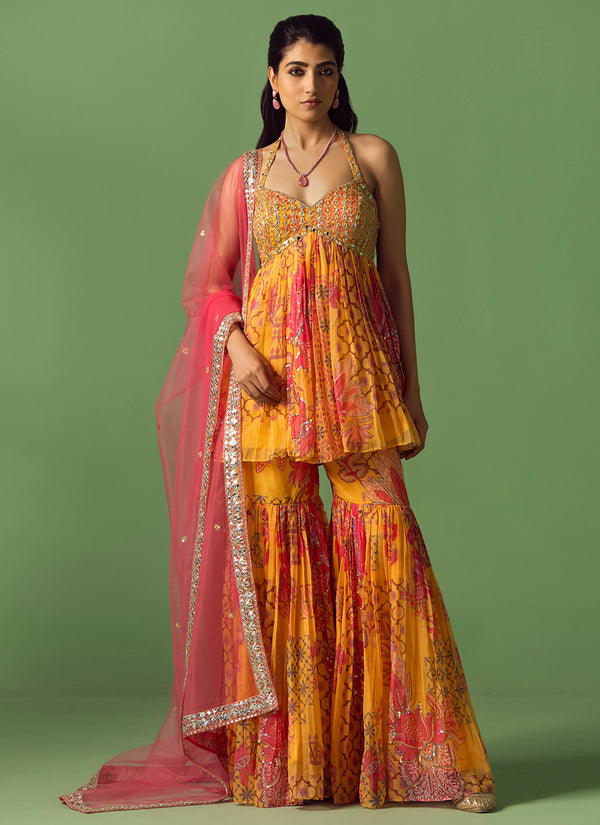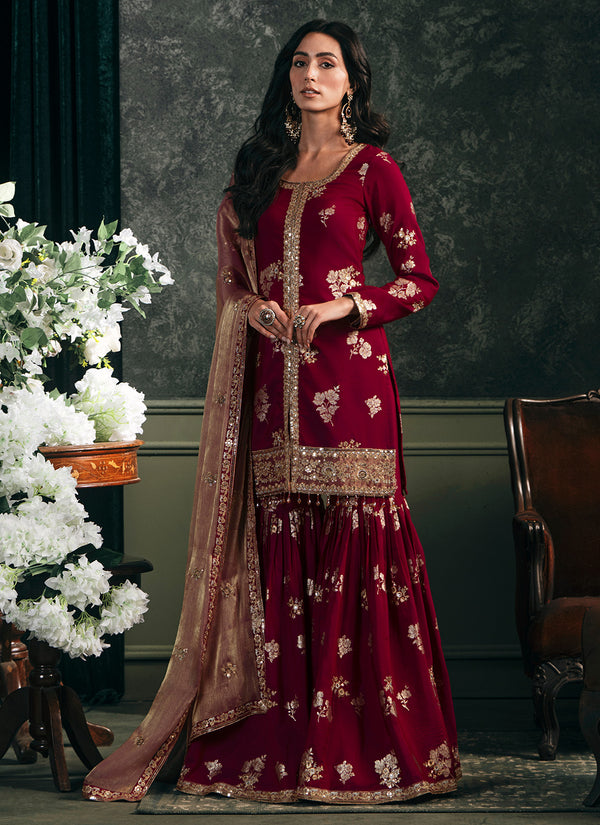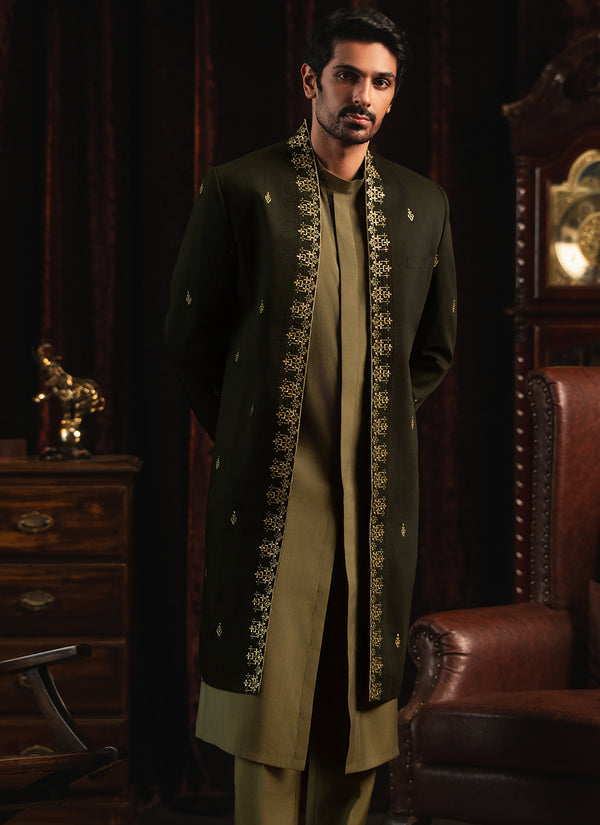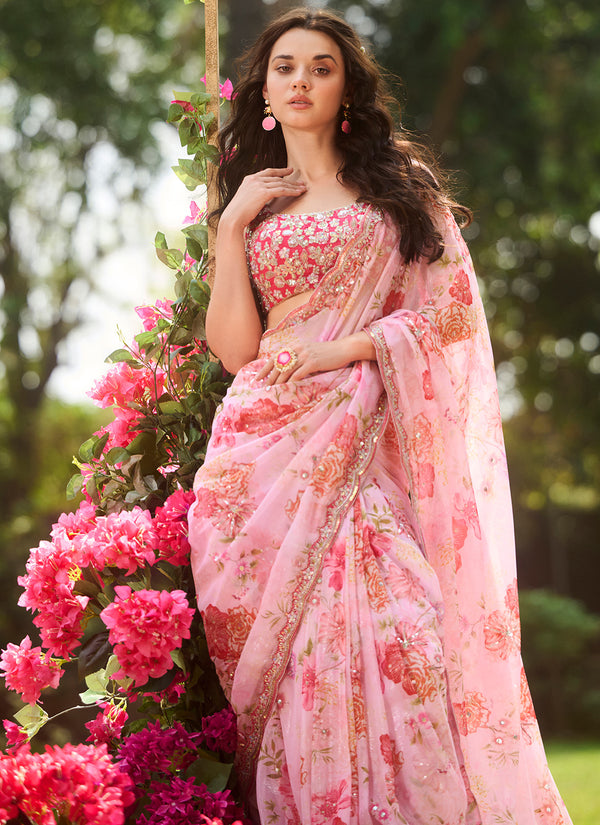
What is a Salwar Kameez & How Do You Style One?
Indian ethnic wear spans from saris and lehengas to salwar kameez. The variations to each style are many and no Indian ethnic wardrobe is complete without a pair of salwar suits. This super versatile style can be worn at office events, wedding functions, Hindu festivities and as everyday wear. Salwar suits come with printed work, embroidery, intricate hand-work, self-work fabric and other styles. One can especially see a variety of ethnic looks during the festive season like on Diwali, Rakhi, Navratri, and other regional festivals.
What is a Salwar Kameez?
The Salwar Kameez, also sometimes known as the Punjabi suit, is a traditional outfit that originated in the Indian subcontinent. This timeless ensemble primarily consists of a pair of trousers and a tunic (kameez) that is usually paired with a dupatta.
The kameez is a long, loose-fitting garment that typically reaches below the knees. It can have various sleeve lengths, ranging from full sleeves to sleeveless, and different necklines. The kameez often showcases intricate embroidery, delicately crafted sequins, and exquisite beadwork, bestowing it with a touch of refined opulence.
Complementing the kameez is the salwar, an airy and comfortable trouser that tapers gracefully at the ankle. Its loose silhouette not only exudes an air of effortless sophistication but also ensures unrestricted freedom of movement. The salwar can be adorned with subtle embellishments, further enhancing its allure.
To complete this ensemble, a splendid dupatta is delicately draped. This resplendent scarf, crafted from luxurious fabrics, serves as a captivating accessory. Whether elegantly draped over the shoulders or gracefully wrapped around the neck, the dupatta adds a touch of ethereal charm to the overall attire.
The Salwar Kameez comes in a wide range of sumptuous fabrics captivating with its rich palette of colors and intricate designs. It showcases the diverse cultural heritage of the region, while its versatility allows it to be worn for a range of occasions, from everyday elegance to grand festivities.
Tracing The Roots of the Salwar Kameez
Salwar Kameez is said to be introduced into South Asia by arriving Muslims in the north in the 13th century. Initially worn by Muslim women, the style quickly gained popularity and eventually became a regional style, especially in the historical Punjab region. This style of garment is widely known as the national dress of Pakistan. It is also worn by men in Afghanistan (of course without the dupatta).
Today, salwar kameez has many variations. The original Pakistani concept of salwar kameez was straight-cut pants, Patiala salwar (super baggy trousers), churidar, pajama, or trousers. The Punjabi style salwar kameez is usually color-rich and vibrant. The Anarkali style salwar kameez comes from the Mughal era and is often worn on festivals, special occasions or at weddings. It features a flared tunic that is usually below knee length paired with churidar pants.
The Most Popular Salwar Kameez Styles And Types
Anarkali
The Anarkali suit comprises of a frock style, flared kameez that is long and flowy. It is paired with a pair of churidar pants. The top is cinched just below the chest and the rest of the kameez flows freely. It is sewn in ‘A’ shape, but has various variations in this style. Anarkali style suit was first seen in the Mughal era and got its name from the renowned Mughal courtesan ‘Anarkali’. This regal looking ensemble can be made in many fabrics – satin, silk, net, georgette and pure cotton.
When choosing an Anarkali, one must consider the occasion, weather and personal style. Women can choose from a variety of neck designs and flare – women with an hourglass figure tend to go for a heavy flare while short or petite ones choose comparatively less flare. Styling the Anarkali right is important. Petite ones should go for heels to add height to the outfit while tall women must avoid knee-length Anarkali suits.
An Anarkali is apt for a bride, festivities, parties, and can be styled for all types of events. Cotton and cotton blend fabrics are often reserved for casual events or even everyday wear. Brides often opt for an Anarkali suit for their wedding functions like haldi, mehendi or even sangeet ceremony and these can feature extensive embroidery. Lashkaraa’s heavily embellished Anarkalis like the Velvet Embellished Anarkali in Light Green color and Light Grey and Pink Heavy Embellished Anarkaliare two stunning pieces for special occasions. Some slightly casual and lighter options can be Off-White Multicolor Floral Printed Anarkaliand Thread Embroidered Anarkali in Lilac.
Patiala Suit
Originating from Patiala, Punjab (as the name suggests), the pleats of this pant start from the hip and go down till the end cuffs. These look best with tight kurtis. Initially worn by royal women, the Patiala suit was gradually adapted by the masses. Different styles of kurtis go well with the Patiala salwar. From straight cut to floor length style and semi Patiala suit, all look equally stunning.
Lashkaraa’s Patiala suit picks list a variety of styles that are perfect for every occasion. From the latest collection ‘Hoor’, the Black Embroidered Patiala Suit is an elegant outfit and is perfect for an evening affair. The Teal Green and Pink Embroidered Patiala Suit would make for a stunning daytime outfit. For those seeking an ensemble that epitomizes subtlety and grace, Nude Pink Thread Embroidered Punjabi Suit is an elegant choice.
Straight Suit
This style is considered the most versatile form of the Patiala Suit. This one is another elegant style suit with long kurtas that can go below the knee, above the knee or even just above the ankle. Lashkaraa’s timeless collection ‘Suroor’ presents many straight suits like the Wine and Green Embroidered Straight Suit and Dusty Peach Embroidered Suit. These styles are steeped in heritage and culture, and look extremely regal.
Sharara and Gharara
The Sharara and Gharara are a pair of flared pants with little difference between the two. Both give the illusion of a lehenga from afar as the silhouette is super flowy. While the sharara pants flare around the legs until the bottom, the gharara pants are fitted from the top above the knees and flared below the knees till the toes.
Both styles are usually worn with short kurtis and make for stunning regal looking ensembles. Depending on the extent of work done on the fabric – heavily embellished, intricate hand-work or simple work on cotton and georgette – the sharara and gharara style works for both special occasions and even daily wear. This style is often chosen by Muslim and Punjabi brides for their wedding ceremonies. Today, women from all cultures and religions opt for the sharara/gharara outfit, popularly for events like Sangeet, Haldi and Mehendi ceremonies.
Lashkaraa’s wide range of Sharara/Gharara outfits like the Dusty Purple Embroidered Sharara and the Maroon Embroidered Gharara Suit from the ‘Hoor’ collection, are a confluence of cultural heritage and modern design. Contemporary styles like crop top and a sharara pant are the modern renditions of the style. Our favorites? Lashkaraa’s Light Pinkand Periwinkle Embellished Crop Sharara Set.
No matter which style you choose, minimal and sophisticated or heavily embellished, each style at Lashkaraa is deeply rooted in Indian culture and heritage while embodying the spirit of the modern Indian woman. To achieve that effortlessly chic look with a touch of tradition, Lashkaraa’s forward thinking style statements will give you an edge over everyone else!
References:
https://purpletulsi.com/blogs/fashion/the-history-and-trends-of-anarkali-suits
https://medium.com/@aswathiunni/origin-history-styles-of-salwar-kameez-cc0cdbd4af45




